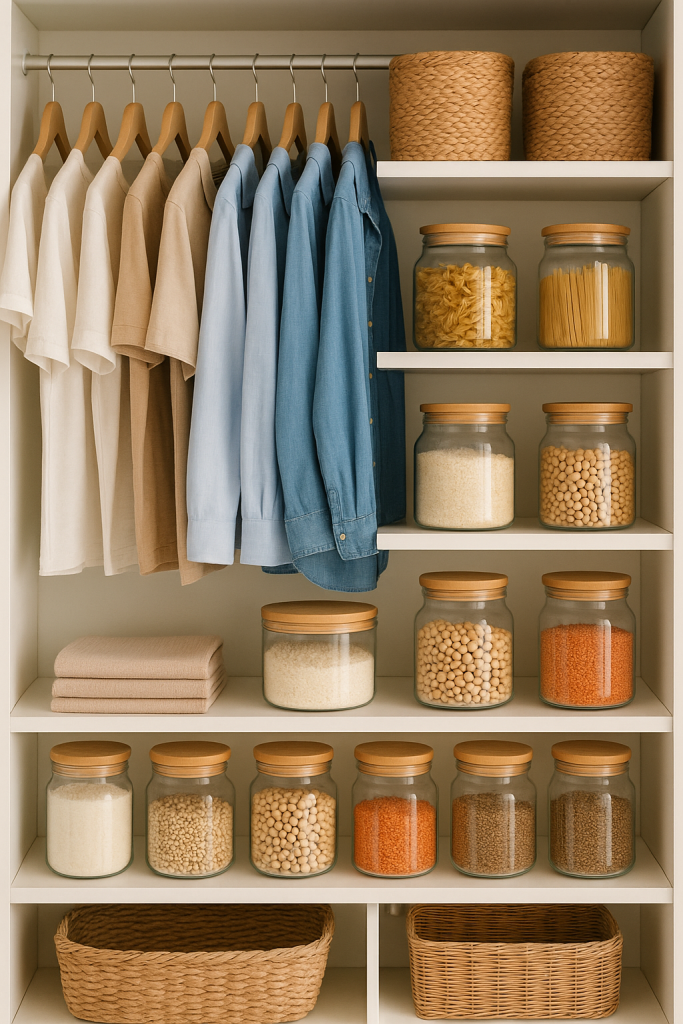
Cleaning is often viewed as a chore. It’s about scrubbing, dusting, and getting rid of clutter. Necessary, yes, but not always inspiring. Yet housekeeping doesn’t have to be only about efficiency. With a bit of imagination, cleaning can be paired with creativity, turning the process into something more personal and even enjoyable. Adding an artistic touch not only makes a home feel fresh but also makes the work itself more rewarding—especially when you visit website of a home cleaning service for tips and inspiration.
The Overlooked Creative Side of Housekeeping
Most people approach cleaning with a checklist: wipe surfaces, vacuum floors, fold laundry. But what happens if you treat those same tasks as opportunities for design? Folding towels becomes a chance to experiment with spa-like arrangements. Organizing a bookshelf can double as curating a mini gallery. Even the way fresh flowers are displayed after tidying up can change the mood of an entire room.
This shift in perspective is small but powerful. Instead of seeing cleaning as an endless cycle, you begin to see it as a canvas. Each room you tidy is an opportunity to add a personal stamp.
Folding as an Art Form
Laundry is one of the least glamorous household tasks, but it holds surprising creative potential. Consider the Japanese art of origami and its application to fabric folding. A neatly folded shirt or a basket of towels arranged in gradient colors can look like intentional décor rather than just storage. Hotels and cruise ships have long practiced the art of towel folding, creating swans, elephants, and other playful shapes. Bringing a scaled-down version of that into your home can add a sense of fun and delight.
Even something as simple as choosing matching hangers and arranging clothes by shade can turn a closet into a visually pleasing space. It feels less like hidden storage and more like a boutique.
Creative Arrangements and Displays
A freshly cleaned home is like a blank stage. Once the clutter is cleared, you have room to decide how everyday items are displayed. Books, candles, baskets, and even cleaning products themselves can become part of the design if arranged thoughtfully.
Take, for example, a jar of natural cleaning brushes on the counter. Instead of stashing them away, display them in a ceramic pot. Their wooden handles and bristles bring texture and warmth to the room. Similarly, organizing pantry items in glass jars with handwritten labels adds a rustic, crafted look while keeping everything practical.
The goal is not to buy more décor but to see what you already own in a new light. When items are displayed with intention, the home feels curated instead of cluttered.
Scent as a Creative Layer
Cleaning isn’t just visual—it’s sensory. Scents play a big role in how fresh and inviting a space feels. Rather than relying solely on store-bought sprays, you can create your own signature blends. Mixing essential oils into homemade cleaning solutions allows you to choose scents that suit each room. For example, lavender and chamomile in the bedroom promote calm, while citrus in the kitchen feels bright and energizing.
Candles, simmer pots, or even a simple vase of eucalyptus branches extend that creative layer. Scents don’t just signal that a home is clean—they set an atmosphere.
Music, Rhythm, and Flow
There’s also a performance element to cleaning when creativity is involved. Many people already listen to music while they work, but choosing playlists intentionally can make it feel less like a task and more like choreography. A lively tempo can keep you moving through energetic tasks like vacuuming, while slower music might be more suitable for organizing or polishing.
Some people even create rituals around cleaning—such as lighting a candle before starting or opening windows to let fresh air in. These small touches transform housekeeping into something closer to a practice than a duty.
Cleaning as Self-Expression
At its core, creative cleaning is about expression. Some people take pride in a minimalist look, where every surface gleams and items are hidden away. Others lean toward cozy abundance, styling corners with layered textures and colors. Neither approach is better—it’s about what feels authentic.
When you stop viewing cleaning as simply removing mess, you open space to design how your home reflects you. That expression might be subtle, like arranging a fruit bowl with care, or bold, like color-coordinating every room. What matters is that the result feels intentional and personal.
Why It Matters
Adding creativity to cleaning might seem unnecessary at first glance. But for many, it changes the relationship with housekeeping. Instead of dreading chores, you begin to look forward to them as opportunities to shape your environment. A beautifully arranged room invites you to spend more time in it. A fresh-smelling home feels calmer.
More importantly, creativity makes the routine sustainable. It’s easier to maintain a clean home when the process itself feels rewarding. You’re not just checking boxes—you’re making art in small, everyday ways.
Conclusion
Housekeeping doesn’t have to be mechanical. With artistic touches, it can become an outlet for creativity and self-expression. Folding becomes crafting, organizing becomes designing, and even scents and sounds become part of the experience. In the end, the reward is more than just a clean home—it’s a space that feels alive, personal, and inspiring.
